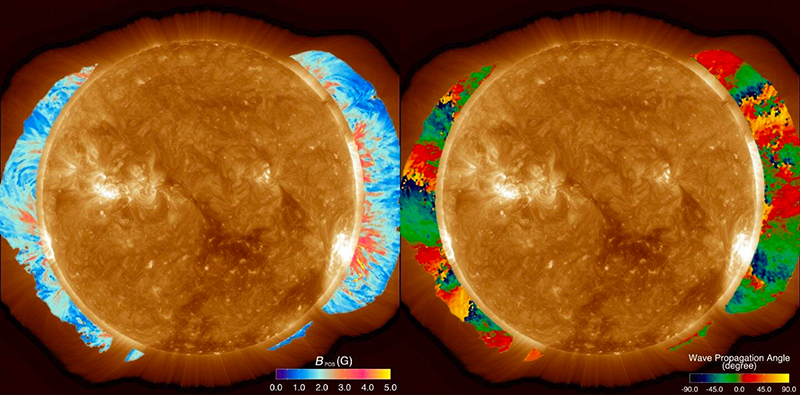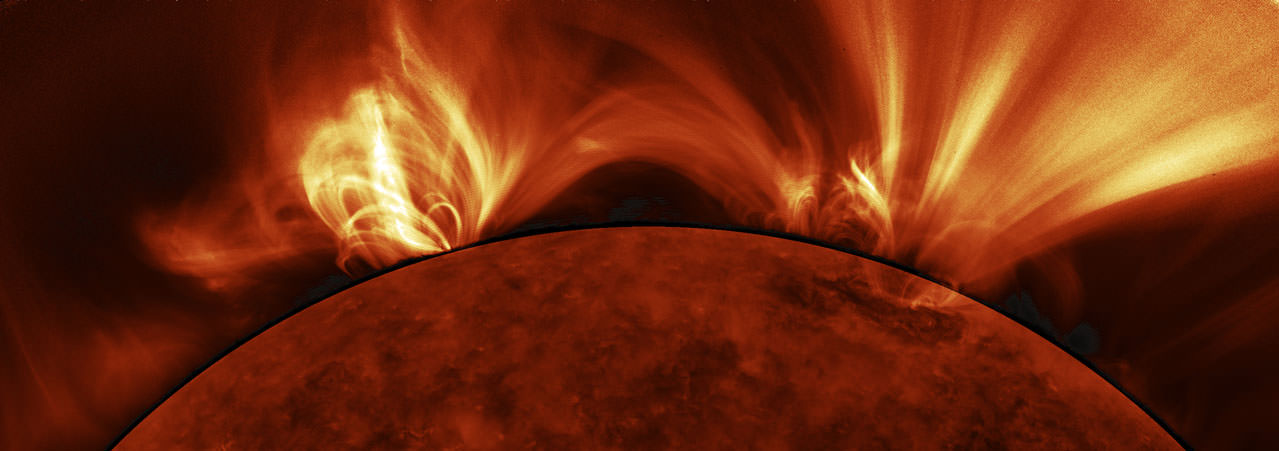
If you’re cold, you don’t move away from the fire, you get closer to it! The air around a light bulb isn’t hotter than the bulb itself, the heat from an object will decrease the further away you measure the temperature (obvious really). Traditional thinking would suggest that this is wrong all sorts of physical laws would be violated. What I’m trying to say is that measurements of coronal particles tell us the atmosphere of the Sun is actually hotter than the Suns surface. This is all very interesting, but why are jets so important? Although these are small events on a solar scale, they still generate huge amounts of energy, heating solar plasma to over 2 million Kelvin, create spurts of X-ray emitting plasma jets and generate waves. As magnetic field lines are forced together, snap, and form new configurations, vast quantities of heat and light are generated in the form of a “microflare”. X-ray jets are very important to solar physicists. X-ray jets in the highly dynamic chromosphere and lower corona appear to occur with greater regularity than previously thought. Putting this new technology to the test, a team led by Jonathan Cirtain, a solar physicist at NASA’s Marshall Space Flight Center, Huntsville, Alabama, has unveiled new results from research with the XRT instrument. Therefore, fast, explosive events such as flares can be tracked easier. The SOT can produce hi-res pictures every 5 minutes. Also, the EIS and XRT can capture images very quickly, one per second. The SOT can resolve the fine structure of the solar surface to 180 km, this is an obvious improvement. The limit of observable solar features has now been lifted. Compare this with Hinode, the same golf ball can be resolved by the SOT instrument from nearly 2000 km away. Much like trying to follow a golf ball in flight from 200 meters away, it is very difficult (try it!). Generally, any feature below 1000 km in size has remained undetected. Up until now, small-scale turbulent processes have been impossible to observe. But the small-scale processes close to the Sun driving the whole system are only just beginning to come into focus.

#SUN CORONA HOTTER PLUS#
It is widely believed that the violent, churning solar surface may be the root cause of accelerating the solar wind (blasting hot solar particles into space at a mind-blowing 1.6 million kilometers per hour) and heating the million plus degree solar atmosphere.

This in itself is not new, but never before has mankind been able to view the Sun in such detail. In Earth orbit and kitted out with an optical telescope (the Solar Optical Telescope, SOT), Extreme ultraviolet Imaging Spectrometer (EIS) and an X-Ray Telescope (XRT), the light emitted from the Sun can be split into its component optical, ultraviolet and X-ray wavelengths. Although X-ray jets are known to have existed for many years, the Japanese Hinode observatory is seeing these small flares with unprecedented clarity, showing us that X-ray jets may yet hold the answers to some of the most puzzling questions about the Sun and its hot corona.Īlthough a comparatively small mission (weighing 875 kg and operating just three instruments), Hinode is showing the world some stunning high resolution pictures of our nearest star. These small explosions fire elegant jets of hot solar matter into space, generating X-rays as they go.

Not just in the active regions, but in polar regions, quiet regions, sunspots, coronal holes and loops. Blinking spots of intense light are being observed all over the lower atmosphere of the Sun.


 0 kommentar(er)
0 kommentar(er)
